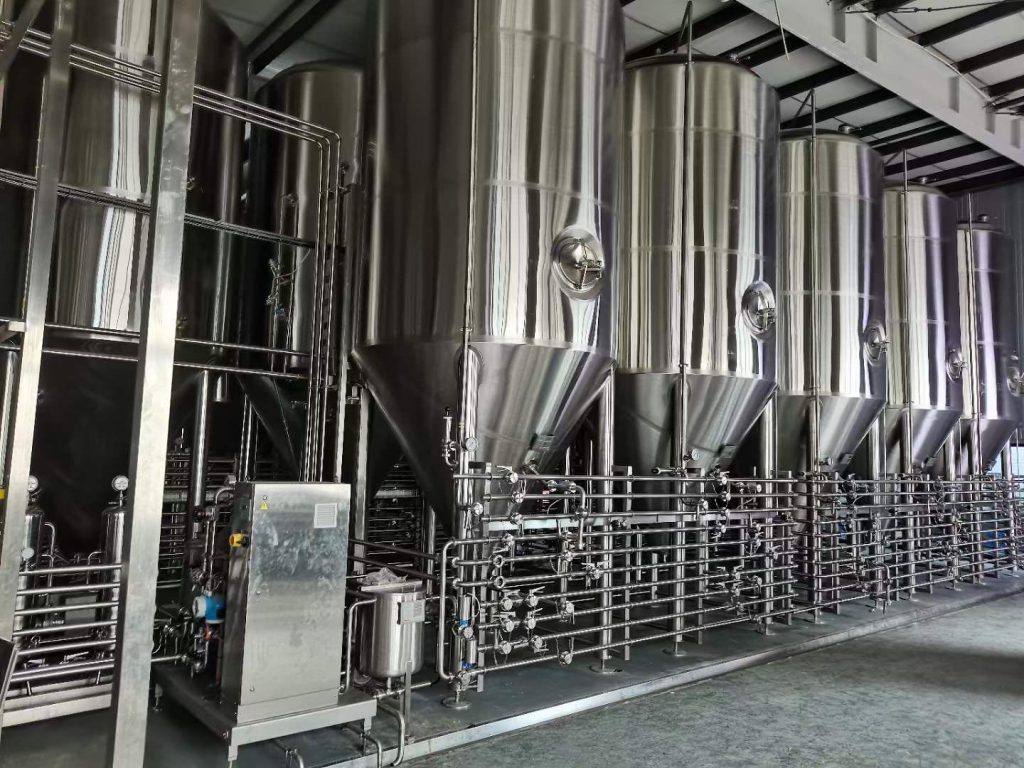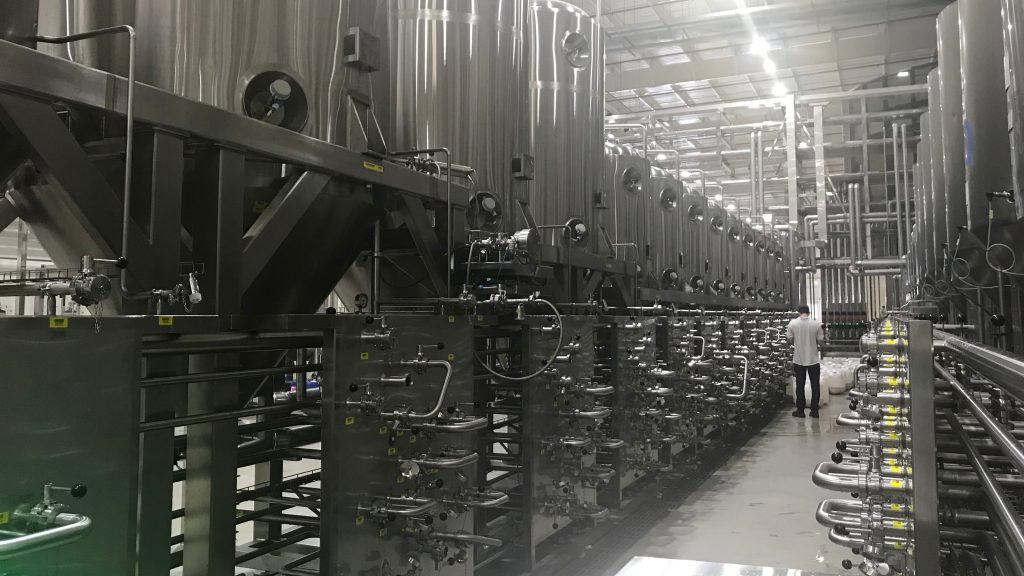Introduction

The brewing process at any craft brewery hinges critically on several key stages, with fermentation being perhaps the most significant. This is where wort—transformed from malted grains—becomes beer through the action of yeast. The choice of fermentation vessels (FVs) is pivotal not only to the process but also to the flavor, clarity, and character of the final product. This blog explores various aspects of fermentation vessels, helping you make an informed decision for your craft brewery.
Types of Fermentation Vessels
Stainless Steel Tanks
Stainless steel fermentation vessels are highly popular among craft brewers for several reasons. They are durable, easy to clean, and completely impermeable to oxygen, which helps in maintaining consistent fermentation conditions. Stainless steel tanks typically come with cooling jackets that allow precise temperature control, crucial for developing the desired beer profile.
Plastic Fermenters
A more economical option compared to stainless steel, plastic fermenters are commonly used by beginner brewers and smaller breweries. They are lightweight and relatively easy to handle. However, plastic is more susceptible to scratches, which can harbor bacteria and wild yeast, potentially leading to contamination issues.
Wooden Barrels
Wooden barrels are traditional fermentation vessels that impart unique flavors and aromas to beer, such as vanilla, coconut, and various spices, depending on the type of wood used. The porosity of wood also allows for micro-oxygenation, which can help in developing complex flavor profiles, particularly in sour beers and barrel-aged brews.
Concrete Vats
Concrete fermentation vessels are gaining popularity for their ability to maintain stable temperatures naturally due to their thermal mass. Additionally, the micro-porosity of concrete allows for a limited oxygen exchange similar to wooden barrels but without the woody flavors, making it suitable for brewers looking for a “neutral” vessel.
Glass Carboys
Glass carboys are often used by homebrewers and can also be suitable for small batch experimental brews in craft breweries. They are impermeable to oxygen and easy to clean, providing a good view of the fermentation process. However, glass is fragile and can be hazardous if broken.
Choosing the Right Vessel

Capacity Needs
The size of the fermentation vessel should match your brewery’s output requirements. Larger breweries will need bigger tanks to maintain efficient production scales, while smaller or boutique breweries might opt for a variety of smaller tanks to produce different types of beer.
Temperature Control
Temperature control is vital during fermentation. Different beers require different fermentation temperatures, and the ability to control these temperatures is a must-have in your chosen fermentation vessels. Stainless steel tanks are typically favored for their integrated cooling systems.
Material Considerations
The material of the fermentation vessel impacts not only the beer’s flavor but also the brewery’s workflow. Consider the longevity, maintenance requirements, and influence on beer flavor when selecting the material for your fermentation vessels.
Budget Constraints
Your budget will significantly influence your choice of fermentation vessels. While stainless steel tanks are a significant upfront investment, their durability and ease of maintenance may provide savings in the long run. Conversely, plastic fermenters may represent a smaller initial investment but might need more frequent replacement.
Key Considerations Table
| Factor | Stainless Steel | Plastic | Wood | Concrete | Glass |
|---|---|---|---|---|---|
| Durability | High | Low | Medium | High | Low |
| Cost | High | Low | High | Medium | Low |
| Flavor Influence | Low | Low | High | Low | Low |
| Temperature Control | High | Low | Low | Medium | Low |
| Maintenance | Low | High | High | Medium | Medium |
Advanced Tips for Fermentation Management
Monitoring and Control Systems
Implementing sophisticated monitoring and control systems can help in maintaining the optimal conditions within your fermentation vessels. These systems can monitor temperature, pressure, and even the chemical composition of the beer during fermentation.
Hygiene and Maintenance
Maintaining hygiene is crucial in brewing. The choice of fermentation vessels should include considerations for easy cleaning and sanitation. This is where materials like stainless steel offer advantages due to their resistance to corrosion and ease of cleaning.
Experimentation and Flexibility
Experimenting with different types of fermentation vessels can offer unique selling points for your brewery. Having a range of fermenters allows for flexibility in brewing different styles of beer, each with its unique character.
Conclusion
Choosing the right fermentation vessels for your craft brewery involves a careful assessment of your brewing needs, budget, and the specific beer profiles you aim to achieve. Whether you opt for the durability of stainless steel, the traditional appeal of wooden barrels, or the cost-effectiveness of plastic, each material brings distinct advantages and limitations to the brewing process.
FAQ
What is the best material for a fermentation vessel?
The best material depends on your specific brewing needs and budget. Stainless steel is generally preferred for its durability and ease of maintenance.
How do I decide on the size of the fermentation vessel?
Consider your brewery’s output and the variety of beers you plan to produce. Larger tanks can produce more beer, while multiple smaller tanks offer flexibility for different brews.
Can the type of fermentation vessel affect the flavor of the beer?
Yes, the material of the fermentation vessel can significantly affect the flavor of the beer. Wooden barrels, for example, can impart unique flavors not achievable with stainless steel or plastic.
